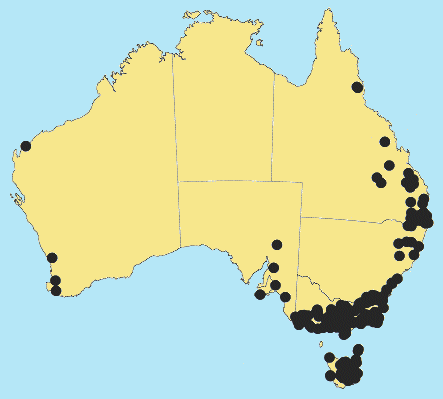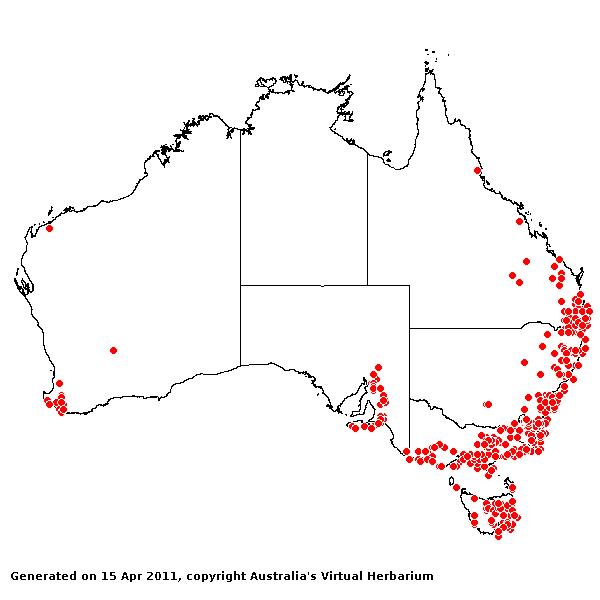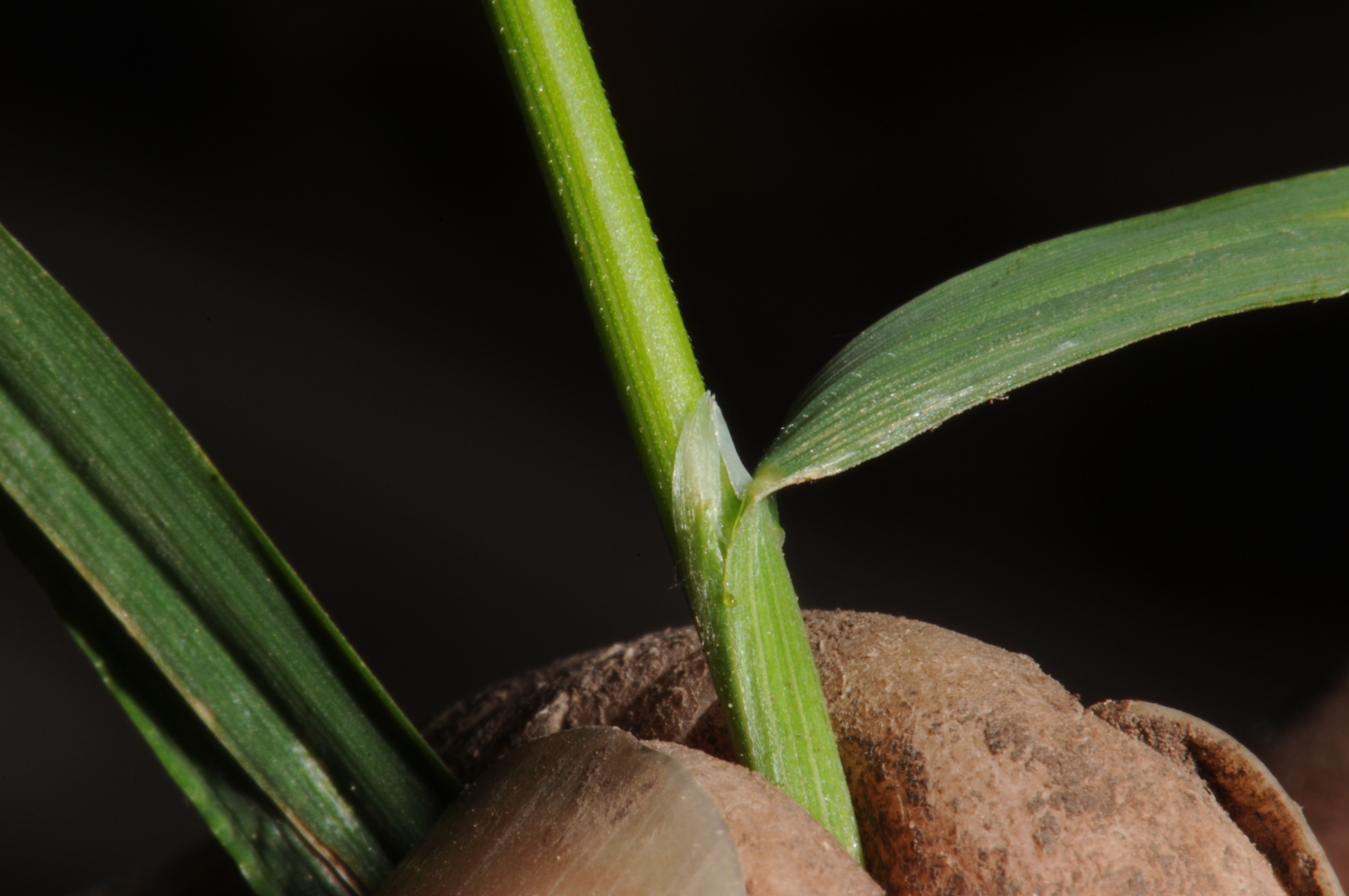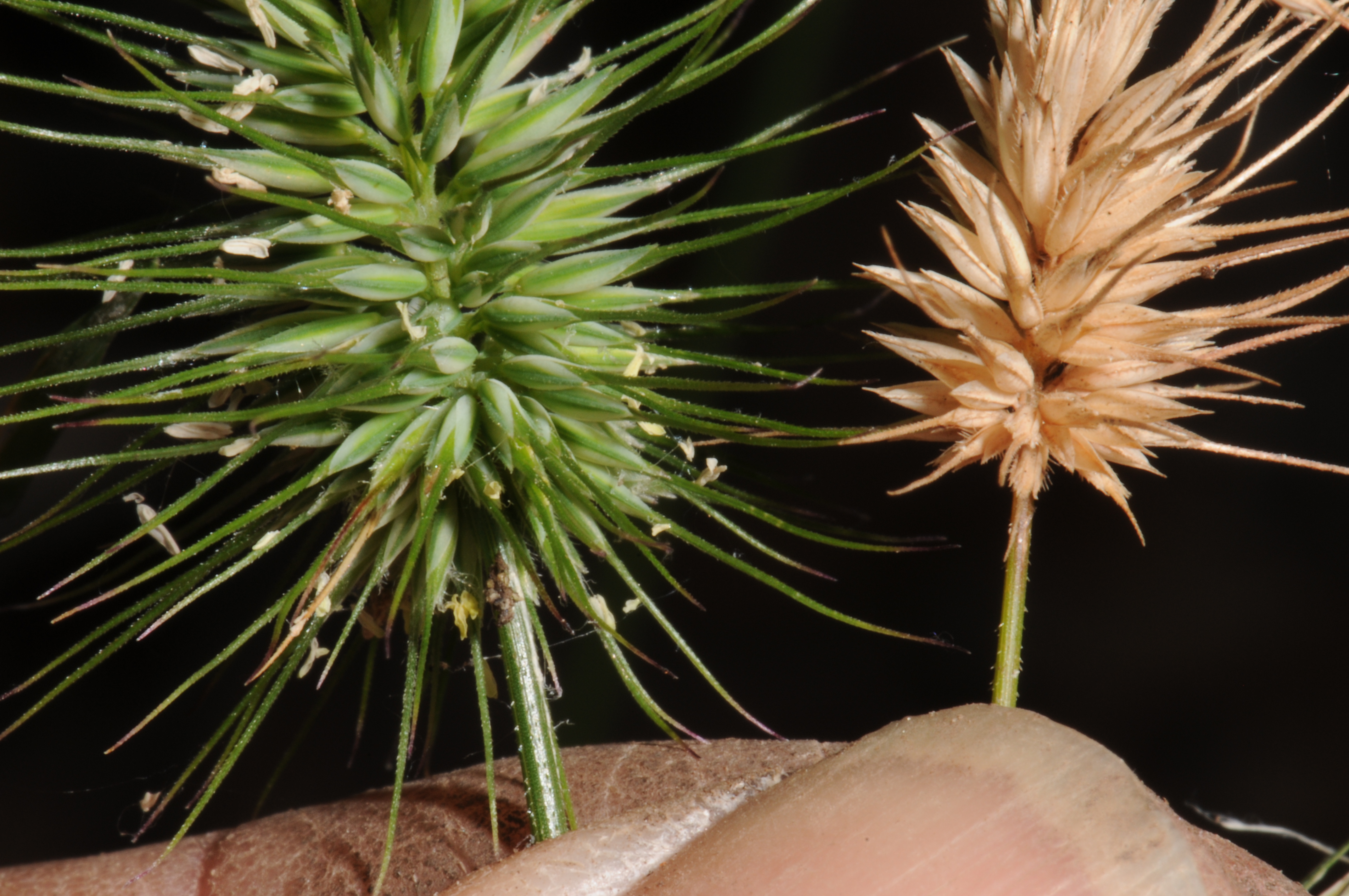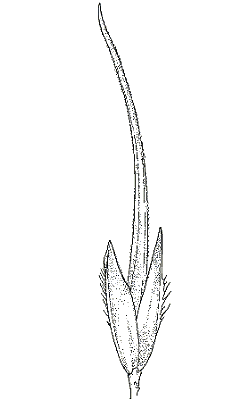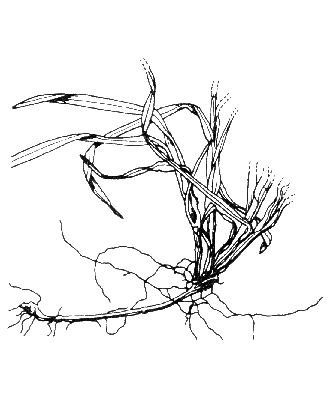Echinopogon ovatus (Forst.) Beauv. Ess. Agrost. 42, 148, 161 (1812).
Classification. (GPWG 2001) : Subfamily Pooideae. Tribe Poeae.
Basionym and/or Replacement Name: Agrostis ovata G. Forst., Fl. Ins. Austr. 40 (1786).
Type of Basionym or Protologue Information: HT: Forster s.n., New Zealand (GOET).
Recent synonyms: E. ovatus var. pubiglumis.
Key references (books and floras): [1810]. R.Brown, Prodromus (171 as Agrostis ovata), [1878] G.Bentham, Flora Australiensis 7 (599), [1952] C.A.Gardner, Flora of Western Australia 1 Gramineae (147), [1969] E.E.Henty, Manual Grasses New Guinea (84), [2002] D.Sharp & B.K.Simon, AusGrass, Grasses of Australia, [2002] J.Wheeler, N.Marchant & M.Lewington, Flora of the South West (413), [2006] J.Jessop, G.R.M.Dashorst, F.M.James, Grasses of South Australia (219), [2008] S.W.L.Jacobs, R.D.B.Walley & D.J.B.Wheeler, Grasses of New South Wales (232), [2009] A.Wilson (ed.). Flora of Australia, Vol 44A. Poaceae 2 (224).
Illustrations: [1952] C.A.Gardner, Flora of Western Australia 1 Gramineae (149, Pl. 45), [2006] J.Jessop, G.R.M.Dashorst, F.M.James, Grasses of South Australia (220, Fig. 166), [2008] S.W.L.Jacobs, R.D.B.Whalley & D.J.B.Wheeler, Grasses of New South Wales, 4th edn (232), [2009]. A.Wilson (ed.), Flora of Australia 44A: Poaceae 2 (225, Fig.31).
Habit. Perennial. Rhizomes present, elongated. Culms geniculately ascending, 10–50(–120) cm tall, 3–7 -noded. Lateral branches simple. Leaves cauline. Leaf-sheaths smooth or retrorsely scabrous, glabrous on surface or hairy. Ligule an eciliate membrane, 2 mm long, truncate. Leaf-blades spreading or recurved, linear or lanceolate, 1.5–16 cm long, 2–8.5 mm wide. Leaf-blade surface smooth or scaberulous, glabrous.
Inflorescence. Inflorescence solid, a panicle. Panicle oblong or ovate, 0.5–5 cm long, 1–2.5 cm wide.
Spikelets. Spikelets pedicelled. Fertile spikelets 1-flowered, comprising 1 fertile floret(s), with a barren rachilla extension, oblong or obovate, laterally compressed, (3–)3.6–5.1 mm long.
Glumes. Glumes similar, thinner than fertile lemma. Lower glume lanceolate or elliptic, membranous, keeled, 1-keeled, 1 -nerved. Upper glume lanceolate or elliptic or ovate, 3–5 mm long, membranous, keeled, 1-keeled, 1–3 -nerved.
Florets. Fertile lemma 3.4–5 mm long, keeled, 5–7 -nerved. Lemma apex entire or dentate, awned, 1 -awned. Median (principal) awn apical or subapical, 3–15 mm long overall. Lateral lemma awns absent. Palea 2 -nerved. Anthers 3. Grain 2–2.5 mm long.
Continental Distribution: Tropical Asia and Australasia.
Australian Distribution: Western Australia, South Australia, Queensland, New South Wales, Victoria, Tasmania, Norfolk I, Lord Howe.
Western Australia: Menzies. South Australia: Flinders Ranges, Northern Lofty, Southern Lofty, Kangaroo Island, South-eastern. Queensland: Cook, Darling Downs, Leichhardt, Moreton, North Kennedy, Burnett. New South Wales: North Coast, Central Coast, South Coast, Northern Tablelands, Central Tablelands, Southern Tablelands, Central-Western Slopes, South-Western Slopes, South-Western Plains. Victoria: East Gippsland, Eastern Highlands, Gippsland Highlands, Gippsland Plain, Grampians, Midlands, Otway Plain, Otway Range, Wilsons Promontory, Snowfields, Wannon. Tasmania: Furneaux Group, North West, North East, Central Highlands, Midlands, Ben Lomond, East Coast, South West, Mt Field.
Notes. Young plants of E. ovatus cause 'staggers' in stock.
Native. Also on Lord Howe Is. New Guinea and New Zealand. Widespread in wet sclerophyll woodland and by creeks. Flowers Aug.-Jan. Fruits Jan.-May.
